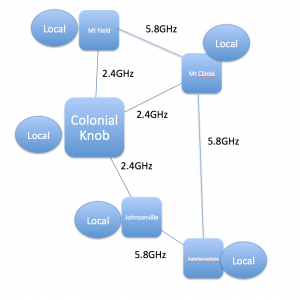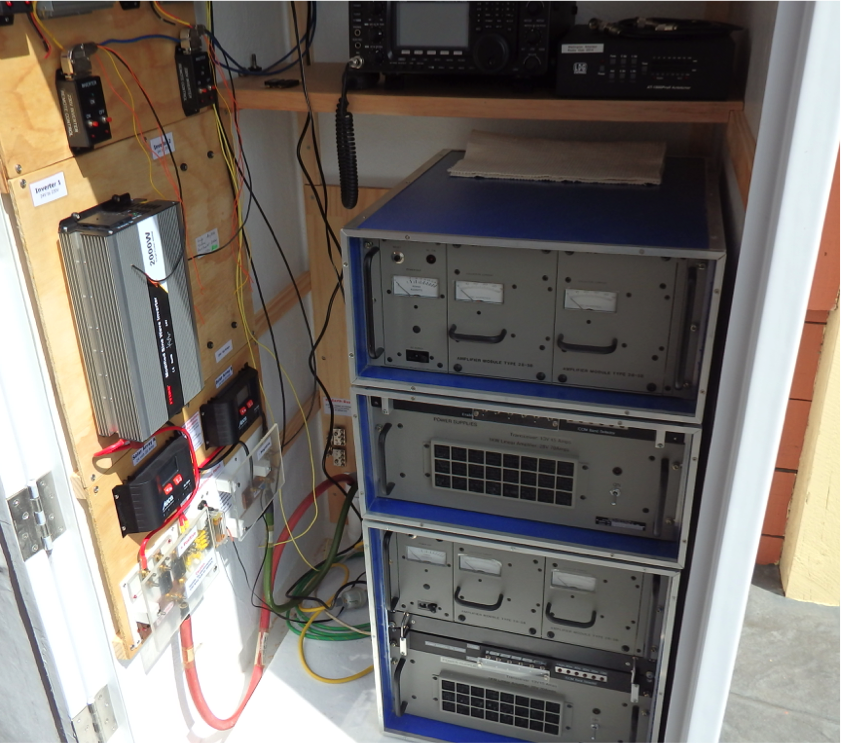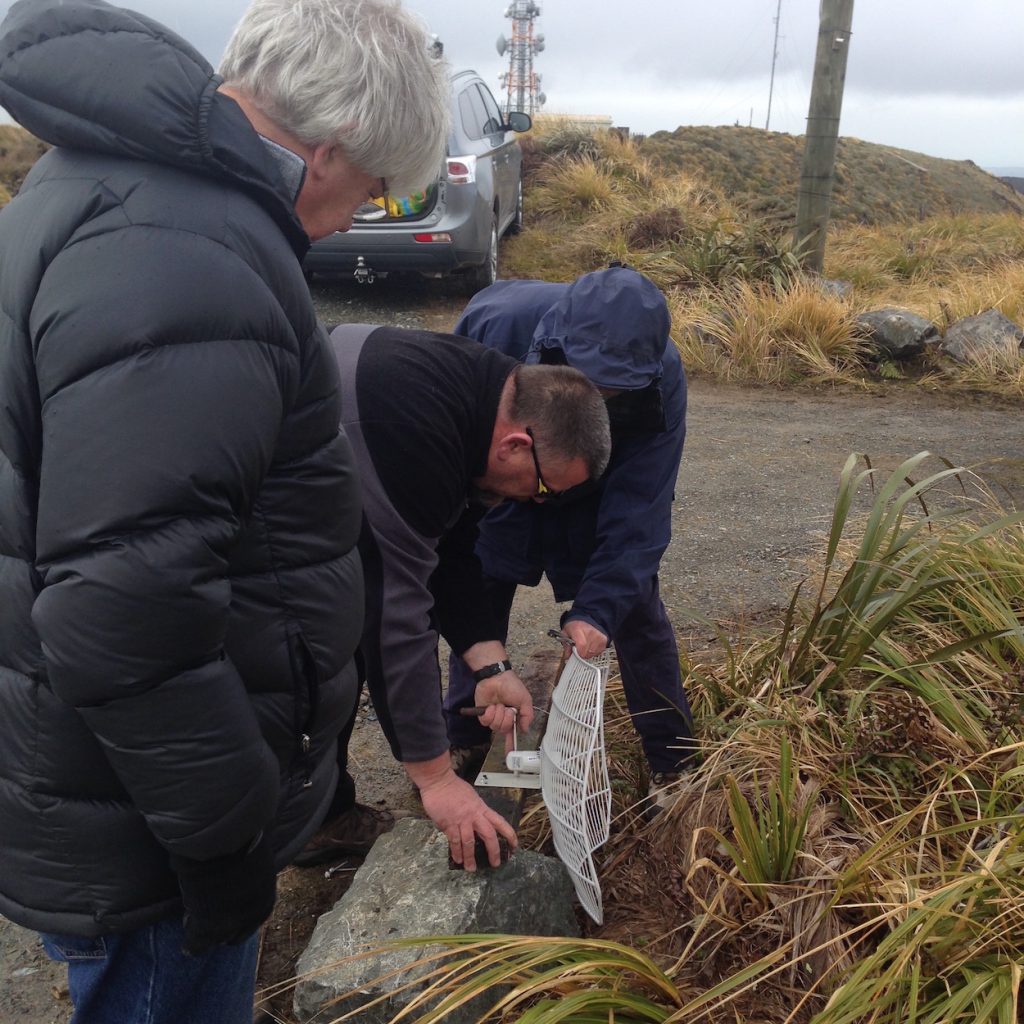The mesh network is in the process of being upgraded in two ways:
- All nodes need upgrading to the latest software AREDN v3.16.1.1
- A backbone needs to be developed to reduce mesh traffic, by isolating sub-nets.
Mesh users around Wellington have been asked to provide access to nodes to allow the upgrading to take place. Most nodes are now operating on the latest AREDN release.
We have found that over the air upgrades are not always reliable, so it is best to do these in situ. Note that if you wish to purchase a Ubiquiti node, most are no longer compatible with AREDN or BBHN (no longer under development). The AREDN team will release a new version of the software in the new year that should be compatible with the newer Ubiquiti products.

The backbone links between Mt Field and Mt Climie, Mt Climie and Kaiwharawhara Hill (Ngaio), and Kaiwharawhara and Johnsonville (ZL2TBU) will be moved to 5.8GHz off-mesh links over the summer. Colonial Knob backbone connections to Mt Climie, Mt Field and Johnsonville (ZL2TBU) will remain on 2.4Ghz due to restrictions on use of 5.8GHz at Colonial Knob. However, it is planned to move these off mesh to reduce traffic loadings and improve throughput.


